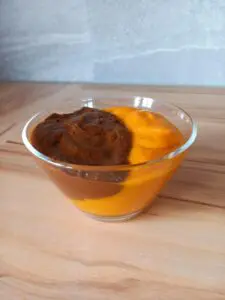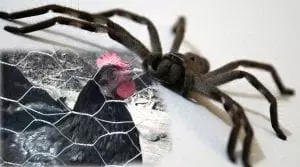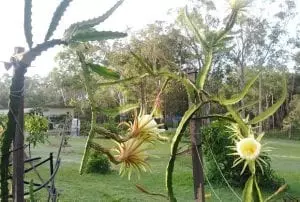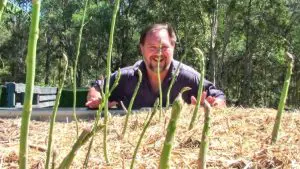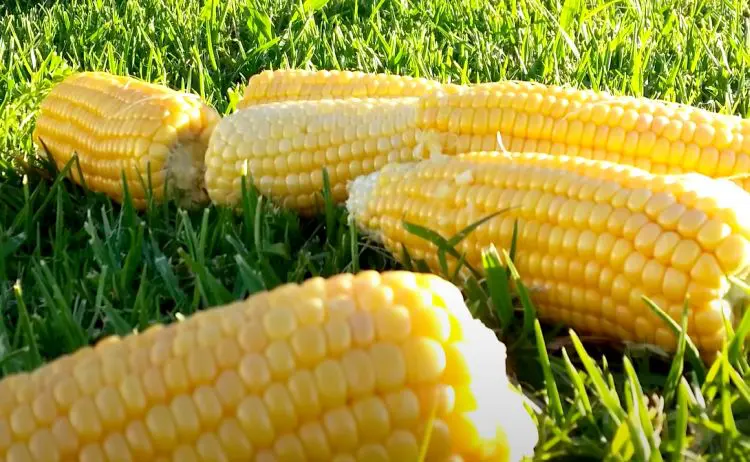
Originating in Mexico, corn is an ancient food whose popularity has not waned with time. Corn comes in a number of varieties and although formally called maize, it is known by many different names. These include popcorn, dent, flint, flour corn and heritage corn. The main type of corn most of us know and eat is sweet corn, but lesser-known varieties are just as valuable in different ways, and are grown for stock feed, popping corn and flour making.
Colourful heritage corn varieties have re-emerged on the vegetable gardening scene in the last couple of years, and while they certainly look stunning (see below), their use in the kitchen is limited. Sweet corn (zea mays), on the other hand, is the one to grow for regular eating. It provides a lot of food, is versatile in the kitchen and preserves well. I love growing corn here in the subtropics, so here are my 5 top tips on how to grow a ton of corn.

When to Grow
Season and temperature are very important to consider when growing corn, as it simply won’t perform well outside of its ideal conditions.
Corn grows best when daytime temperatures are consistently between 20-30C (68-86F). I live in a warm climate (the humid subtropics), so I’ve experimented with trying to grow corn during winter, as that season is short and very mild here. And I have to say, “don’t bother”, because every time I tried, the results were terrible. The plants grew, sure, but they were stunted, pollination was poor, and the crop wasn’t worth the effort. I concluded that corn really must be grown during the hottest season of the year, no matter where you live. (For the low-down on my winter corn experiments, click here to see the video).
If you live in the tropics, you can grow corn all year round, but I suggest planting it in the dry season for best results. In cool climates, plant corn coming into summer, but as early as possible. If you’re in an area that experiences frosts, get a head start by starting seed indoors under heat, so that cobs can ripen during the hottest months of the year. Temperate and subtropical growers should start corn as the weather warms up, and allow 10-12 weeks of growing time through the hottest part of the year.

Preparing Soil & Fertilising
Corn prefers light, free-draining soil that is full of organic matter. This type of soil obviously provides great drainage, water retention and nutrition, but there’s more to it than that. Rich, light soil heats up quickly after winter, plus it enables the roots of corn plants to grow downwards quickly, which allows them to get a good foothold which stabilises the plants effectively. Corn is known for its shallow root system, which means it is inherently unstable and will struggle in dry conditions, which makes soil quality all the more important. Where possible, try to site your corn patch in a protected position. High winds can easily damage the plants and prevent pollination.

When it comes to corn, fertilising the soil weeks or even months in advance of planting is better than doing so at the point of planting. In my experience, fresh fertiliser tends to make corn grow spindly and leggy due to too much nitrogen. I’ve found it’s better to let the ‘hot’ nitrogen dissipate for a while before planting into it, otherwise the plants put too much energy into the plant rather than the fruit.
Sowing
Corn can be sown directly into garden beds or in seed trays and planted out later. I usually sow my corn directly into its final position, and I sow it thickly in case germination is poor or I have pest issues (i.e. rats or mice). If I end up with too many corn seedlings, I can thin them out and transplant some elsewhere in the garden. To me, this is better than having too few then needing to sow more seed a few weeks later.
If you live in a climate that is temperate or cool, it’s best to sow corn seed indoors in containers then plant them out when the conditions are right. This is an effective way to grow corn successfully, as corn seedlings won’t establish properly when the soil is less than 10C (50F). One advantage of sowing in punnets for later transplant, is that you can plant the deeply, which allows it to grow extra roots and sit securely in the soil, which helps when it is windy.

Whether you should plant corn in blocks or in rows has long been debated. While it is traditional in western cultures to plant corn in rows, block planting is now considered better, as it allows for higher pollination. The pollination process begins when the male flowers at the top of the stems shed pollen. This pollen is then spread by the wind or by insects on to the silk, which grows out of the cob which contains the female flowers. Growing in blocks gives this pollination process a higher success rate.
If you only have enough room for a row of corn or a few pots then place them fairly close together and try it anyway- after all, ‘giving it a go’ is what gardening is all about. If you find out later on that the kernels are incomplete or poorly formed, then you’ll know that you need to improve the pollination.
The best spacing for corn is about 30cm (1′) apart. If they’re any closer together, the harm will outweigh the benefits (don’t ask me how I know this…). The plants will rob each other of light, nutrients, & water, show stunted growth and small cobs.
Succession planting is when you successively sow a batch of any one seed at 3- or 4-week intervals, so that a continual harvest rather than a glut is assured throughout the season. This is an option when you live in an area with a long growing season (like the tropics or subtropics). If this is you, make sure you position your corn so that sun exposure is maximised & it won’t be shaded out by other plants.
Growing
It never hurts to sow or plant out more corn than you need. Even if it all develops and grows to maturity, a glut of corn isn’t a bad thing because it’s easy to freeze or preserve.
Corn is a water-hungry crop with a shallow root system so it needs to be watered regularly. Under-watered corn quickly becomes stressed, which results in early maturation and underdeveloped cobs.
The earworm caterpillar is a particular pest to corn. It drills in from the top of the cob, down through the silk, and feeds on the kernels. This rots the cob from the top down, which is difficult to see as the holes are small and the cob remains wrapped. To spot this pest, pay close attention to the silk, as you may be able to see some droppings there. If so, harvest that cob early, cut off the bad section and eat the rest.

Corn is also susceptible to rust on its leaves. This tends to happen at the end of the season as the weather cools down. A small amount of rust is acceptable and won’t kill the plants. I usually leave it untreated but if you want to take action, start by removing and binning (not composting) the leaves. As a last resort, rust can be treated with a fungicide spray.
Being a tall crop, corn is also prone to attack by birds. This can vary widely between areas and even seasons, and is another reason to grow more corn than you need. You can always net the whole crop if necessary, which has the added benefit of providing a little more wind protection.
Don’t over-fertilise during the growing season. It’s a good idea to give a boost of fertiliser if the leaves start to look pale or sickly. Otherwise it’s better to leave them be, because under-fertilising is better than over-fertilising when it comes to corn.

Harvesting
It can be difficult to tell when corn cobs are ready for harvest. The first sign is browning of the silks. As soon as you see this, test a cob by peeling back a bit of the husk from the tip (shown above). The kernels should look ready to eat, i.e. swollen and plump. Press a fingernail in to a kernel or two- if the juice comes out looking milky, the corn is ready. If a clear liquid emerges it’s not ready, so cover the cob back up for a while longer.
Try to eat your corn as soon as possible after harvesting, because the fresher it is, the better it will taste. You can leave ripe corn on the plant for an extra couple of weeks for eating fresh. Be careful not to leave it any longer than that, or it will become dry and starchy.
Corn will dry out if you leave it on the plants for too long. On the upside, this can be a fun thing to experiment with. You could make your own preserved corn, polenta or corn flour. At the very least, chickens, ducks and other animals you might keep will consider corn a treat. If you’ve planted an heirloom variety, keep some kernels as seed for next season too.
After harvest, the stalks and dead leaves can be used as mulch. Simply chop them up a little and lay them back down on top of the soil. They’ll slowly break down and enrich the soil, ready for next seasons crop.
For more info on how to grow a ton of corn, check out our youtube video below!

